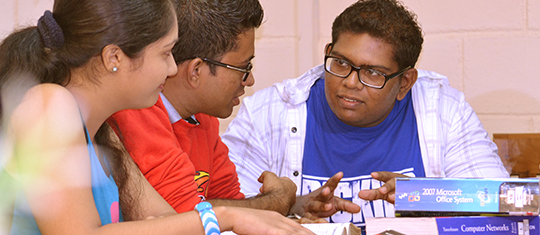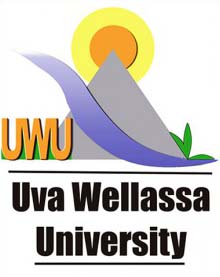Volume 03 Issue 02
01.Assessment of color stability and the functional properties of food colorant developed using Clitoria ternatea flowers
T.A.D.H. Amali, M.H.T.K. Chandrasiri*, K.H.I.K. Hewavitharana, J.K.H. Sampath
Department of Biosystems Technology, Faculty of Technological Studies, Uva Wellassa University of Sri Lanka
INFORMATION
Journal Title : Journal of Technology and Value Addition
Volume : 3 Issue : 2
Page : 01– 22
Correspondence : thilinichandrasiri22@gmail.com
ABSTRACT
Color is one of the most important organoleptic properties of food which can influence on consumer preference. Due to health awareness, there is an increasing demand for natural food colorant over synthetic counterparts. Butterfly pea (Clitoria ternatea) flower is remarkable as one of the most vital anthocyanin sources that gives characteristic blue color. Present research study focused on the identification of a best method to extract anthocyanin from Clitoria ternatea flower without destroying its functional properties. Accordingly, 3 methods: direct extraction (T1), blanching extraction (T2) and blanching extraction with addition of natural preservative (T3) were selected to extract anthocyanin from C. ternatea flower. The functional properties were assessed using standard methods. The sensory evaluation was carried out to assess the color, taste, aroma and overall acceptability using a nine-point hedonic scale. Food colorant extracted from T2 had higher flavonoid content (173.97 ± 7.8 mg/L) and total anthocyanin content (67.6 ± 29 mg/L) compare to the other two treatments. However, sample from T1 contained strong antioxidant properties since it had the least IC50 (44.14 ± 2.9 %) while showing highest phenolic content (48.49 ± 4.0 mg/L). Out of the three treatments, food colorant from T3 had higher color stability, higher shelf life (28 ± 2 days) and was highly accepted in terms of overall acceptability and color by sensory panelists. Therefore, it could conclude that food colorant gel from T3 is the best alternative for artificial blue colorants which is a natural extract without any health concerns.
Keywords: Anthocyanin, butterfly pea, food colorant gel, functional properties, natural food colors
2. Assessing Quality of Life of the Visually Disabled People in Sri Lanka using the Seven Domains of Personal Wellbeing
M.D.R.K. Jayathilaka1*, V. Dunuwila1, D.S.C. Attale2, H.S.H. De Seram2, D. R. Sudusinghe2, H.A.P.I. Abeyrathna2, T. Suraweera1, S. Thelijjagoda1
1 Department of Information Management, SLIIT Business School, Sri Lanka Institute of Information Technology, New Kandy Road, Malabe, Sri Lanka.
2 Department of Business Management, SLIIT Business School, Sri Lanka Institute of Information Technology, New Kandy Road, Malabe, Sri Lanka
INFORMATION
Journal Title : Journal of Technology and Value Addition
Volume : 3 Issue : 2
Page : 23– 46
Correspondence : ruwan.j@sliit.lk
ABSTRACT
Quality of life (QoL) of the disabled is of interest to social researchers, though in general, it is a concept somewhat overlooked by many nations including Sri Lanka. This study examines the extent to which the seven domains of the Personal Wellbeing Index (PWI) impact the QoL of people with visual disabilities in Sri Lanka. The PWI comprises of seven social indicators viz, standard of living, achievements in life, community connectedness, close relationships, health, safety and future security. The sample of visually disabled population for this study was obtained from, Hambanthota District, in Southern Sri Lanka, as it records the highest rate of vision impairment in the country. Data collection was performed through a tailored questionnaire and thereafter analysed to determine relationships between the above mentioned seven domains and QoL. Demographic factors such as age and gender were also examined. Results conclude that majority of visually disabled individuals, especially those in the 40-59 age group are satisfied with the seven PWI social indicators examined. However, the domain of future security remains a significant concern, while females appear to be dissatisfied in terms of close relationships, achievements in life and standard of living, in addition, community connectedness and achievements in life domains need to be addressed by the policymakers to sustain QoL among VIandB in Sri Lanka.
Keywords: Blind, Personal Wellbeing Index, Quality of Life, Visually Impaired
3. Can the mealybug wilt disease on pineapple be controlled using fertilizers?
M.D.A.P. Mananadewa1, L.K.R.R. Jayakody1, C. Ranasinghe,2 K.I.C. Amarasinghe1*
1Open University of Sri Lanka, Nawala, Nugegoda, Sri Lanka.
2 Plant Virus Indexing Centre, Pitipana, Thalagala Road, Homagama, Sri Lanka.
INFORMATION
Journal Title : Journal of Technology and Value Addition
Volume : 3 Issue : 2
Page : 47– 62
Correspondence : kiama@ou.ac.lk
ABSTRACT
Mealybug wilt on pineapple is a threatening problem for the pineapple cultivation worldwide including Sri Lanka. The characteristic symptoms include reddening of leaves, twisting of leaf tips and finally wilting of the whole plant. The disease is caused by a virus known as Pineapple Mealybug Wilt associated Virus (PMWaV) and transmitted by mealybugs. Sri Lankan farmers use many kinds of fertilizers to suppress this disease. The present study attempted to determine whether different fertilizer applications have any effect on managing the above disease while studying the best fertilizer/s to control this disease successfully. Pineapple suckers infected with PMWa virus were planted and six different fertilizer treatments, (Albert’s solution, Baur Coconut fertilizer, Baur Pineapple fertilizer, NPK mixture recommended by Department of Agriculture, Green care Liquid fertilizer, Rhizobacteria Bio fertilizer) were applied. Infected plants with no added fertilizer were used as controls. The disease severity was evaluated using five-unit disease index scale. All the plants including the controls were tested for the presence of PMWa virus by Indirect Enzyme Linked Immunosorbent Assay (ELISA). Growth parameters such as number of leaves and leaf length were also measured in all the plants. This study indicated that the disease severity was low on plants treated with Albert’s solution throughout the experimental period. The plants treated with Baur Coconut fertilizer showed higher disease severity at the beginning. However, there was a sharp decline in disease severity with time. The plants treated with Baur Coconut fertilizer indicated the lowest virus concentrations followed by those that were treated with Albert’s solution. The highest number of leaves were noticed in the plants treated with Baur coconut fertilizer whereas the highest leaf length was observed in the plants treated with Albert’s solution revealing that these two fertilizers can control the disease effectively while improving the vegetative growth.
Keywords: Pineapple, Mealybug Wilt Disease, Fertilizers, PMWaV,
4. Perspectives of Construction Supervisory Workers on the Project-level Causes Affecting the Efficiency of Labour Operations in Sri Lankan Building Projects
K. Manoharan1.2*, P.B.G. Dissanayake1, C.K. Pathirana1, M.M.D.R. Deegahawature3, K.D.R. Silva4
1 Department of Civil Engineering, University of Peradeniya, Peradeniya, Sri Lanka
2 Department of Construction Technology, Wayamba University of Sri Lanka, Kuliyapitiya, Sri Lanka
3 Department of Industrial Management, Wayamba University of Sri Lanka, Kuliyapitiya, Sri Lanka
4 Centre for Quality Assurance, Wayamba University of Sri Lanka, Kuliyapitiya, Sri Lanka
INFORMATION
Journal Title : Journal of Technology and Value Addition
Volume : 3 Issue : 2
Page : 63– 84
Correspondence : kesavan@wyb.ac.lk
ABSTRACT
The construction industry thrives on productive-based project-level operations, which help businesses to realise their anticipated profitability and long-term viability. Past studies draw attention to the subpar project-level procedures that reduce productivity in numerous developing nations, including Sri Lanka. Construction supervisors are one of the key resources who provide blood circulation for a wide range of project-level practices. This study sought to quantify the effects of project-level causes on the efficiency of construction operations in Sri Lankan building projects based on the viewpoint of construction supervisors. First, a comprehensive literature review was used to qualitatively identify the project-level determinants. A questionnaire survey was then conducted among construction supervisors working from 64 Sri Lankan building construction firms. The effects of the project-level determinants on construction productivity were evaluated using the Relative Importance Index (RII) approach. The findings highlight the need for construction management teams to strengthen their current planning and monitoring practices with a focus on construction methods, working conditions, scheduling and sequencing of construction tasks, health and safety procedures, quality control procedures, reworks, labour skill development and workforce over time. The statistical evaluations guaranteed the validity and dependability of the findings. In addition, a series of industry consultation seminars and discussion sessions were held among construction specialists to identify future actions in the planning procedures for construction projects. The validity of the aforementioned results was also guaranteed by these debate outcomes. The findings of the study will encourage construction management practices to lessen conflict situations between project-level activities at various phases, resulting in the accomplishment of organisational objectives. Although the study findings are restricted to the building construction sector of the Sri Lankan setting, some of them might be evaluated in similar situations in other developing nations.
Keywords: Building projects, construction supervisors, labour efficiency, Sri Lanka


